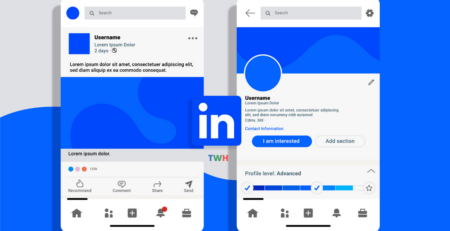Last updated on July 11th, 2023 at 04:37 pm
Black Friday E-Commerce - Trends and Results 2021
We studied customer data from our base, as well metrics from other companies in order prove interesting trends about which true Key Performance Indicators (KPIs) could be measured – without any guesswork involved!
The Black Friday shopping craze has been around for more than 50 years, but it’s evolved into an event that happens almost every day of November.
Today there are even “weekend” versions where stores start their sales early on one certain week and continue through Cyber Monday – these events have helped create other retail holidays like Singles Day or Christmas Eve sale periods too!.
A Shift in Black Friday Consumer Behavior
The shift towards more environmentally conscious customers means that many businesses have decided to Boycott Black Friday shopping.
According to Johan Sommar, Avensia’s Chief Strategist there has been an increase in both physical and e-commerce transactions during recent years’ killers of Thanksgiving day (Thanksgiving) which some people call “BlackFriday.”
In a world where companies can no longer rely on Black Friday E-Commerce Trends to create sales, they need an offer that is both attractive and compelling. “It isn’t enough anymore just presenting discounts or deals as there is now competing with other offers from competitors who also want customers this holiday season,” he concludes.
Black Friday E-Commerce Trends in 2021
Companies today have a good understanding of how to approach Black Friday.
They know that customers are aware in advance about discounts and prices, so if companies publish an offer without being transparent from the start it’s likely consumers will tell their friends through social media.
It doesn’t matter when you buy – if something sounds too good be-online then there’s probably some kind-of catch behind-in order for shoppers not get caught off guard during this very popular shopping season.
The expectations of shoppers have changed in recent years.
They no longer want just discounts but also a great shopping experience which is why companies must deliver on this front if they want to keep up with their customers’ demands.
In the past, many e-commerce platforms would crash when consumers rushed onto them during Black Friday sales periods due solely because there was too much demand for deals and offers (and not necessarily overspending).
However now it seems as though people expect more from websites than simply being able make some money off us; we’re supposed.
But today, thanks to more solid systems, e-commerce businesses can avoid the “high alert mode” and employees are still able perform day-to tasks during Black Friday sales period.
Black Friday Performance 2021
Not surprisingly, the sales associated with Black Friday and Cyber Week were more spread out in 2021.
However, e-commerce still accounted for a large proportion of these transactions due to its ease when finding deals as well as being able avoid crowds at stores on this day which often happen during traditional shopping periods like;
Thanksgiving or Christmas weekends where there can be higher volumes than usual because people have less other responsibilities that require their attention outside buying items online before they arrive home later after work hours complete alleged.
In our report, we grouped our customers into four segments;
- Beauty & Cosmetics
- Sports & Outdoor
- Fashion & Design
- Consumer Goods / Other
The report analyzes the e-commerce performance of various customer types, including both long lasting Avensia clients and new site launches during last year.
It also includes data on retail customers who use Black Friday concepts in both B2C or D2c environments – this is where you’ll find most people reading about these findings!
Remarkable Outcomes
The total number of users on the Beauty and Cosmetics websites during November was about equal to last year’s numbers, but there has been an increase in web traffic from average months. The percentage change increased by 70%.
The Avensia data set shows that while the average numbers from customers were not remarkable, sports and outdoor retailers did well during Black Friday.
November’s traffic levels are on par with other months for this segment of industry leaders. However returns increased among these companies’ clientele a lot more so than expected–and it’s thanks largely due to social media influences like Millennials who rely heavily upon their reviews online before making any purchase decisions.
Risk assessment: With an ever-growing digital world out there vying against each other just as much at times even if they don.
The fashion industry is not immune to the woes of many businesses during these times.
The Black Friday period saw an astonishing 63% decrease in traffic for our company’s online store, which happens as much too ensure that customers can order their new items without having them shipped right away!
The good news though?
Customers who placed orders through buy-now payment plans had increased by 35%. This means you might be able get what’s on your mind even if it doesn’t necessarily come cheap or easy – but at least there will always.
The global consumer goods industry is currently dealing with supply chain problems that have led to more disappointment for customers.
The divide between big-name retailers and small independents means many of them avoided Black Friday this year, despite it being an opportunity among other things like lower prices or better deals than usual on certain products they may need soon anyway.
So, conversion rates were down during the period compared to average months in our company’s history.
With our detailed reports, you’ll get all the KPIs results from each segment and global stats!












Comment (1)
“Great blog! The content is insightful and well-written. I appreciate the valuable information shared here. Keep up the fantastic work. Looking forward to reading more from you. Thanks for sharing your knowledge and expertise with us!”
Comments are closed.